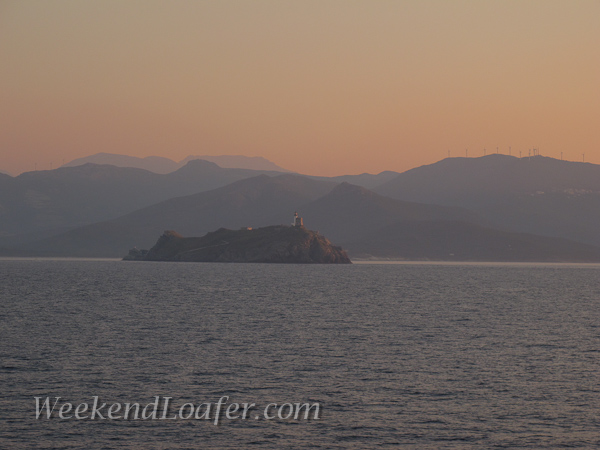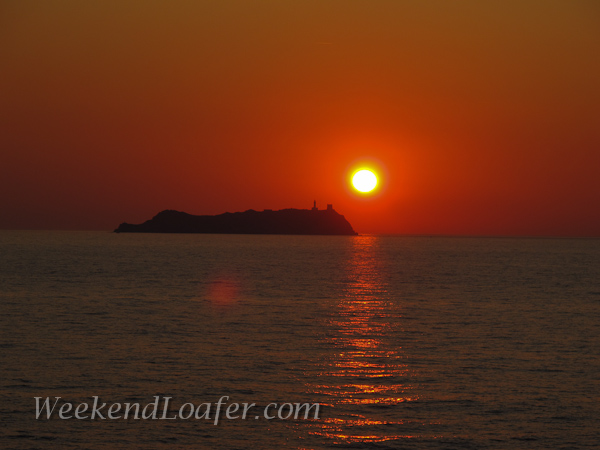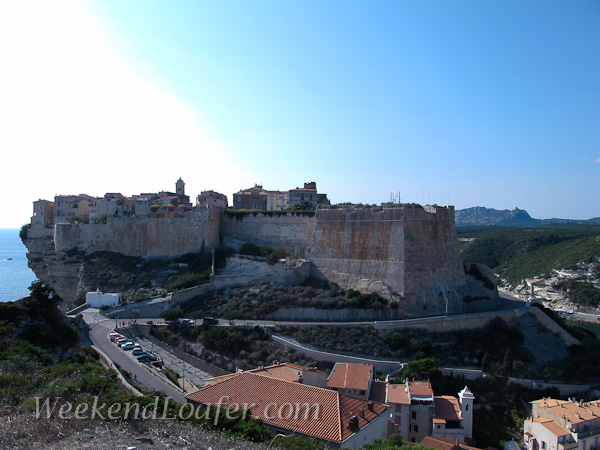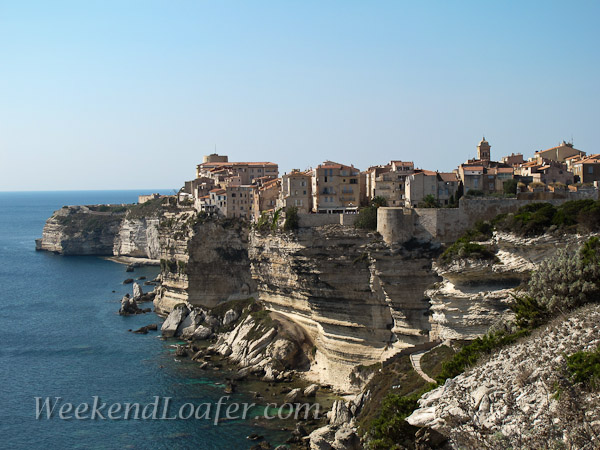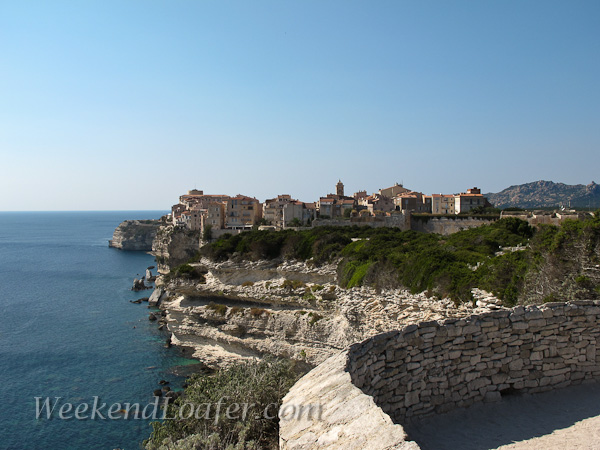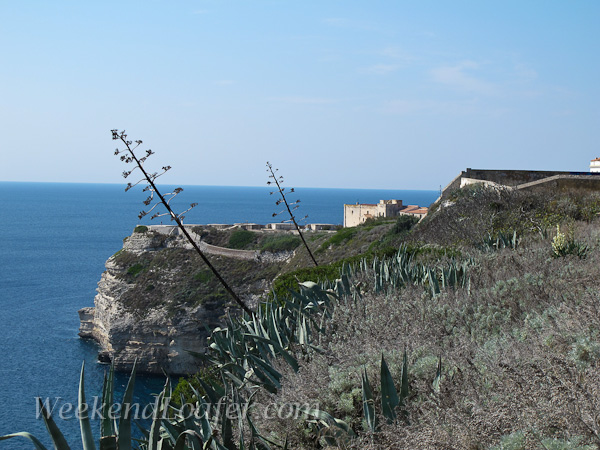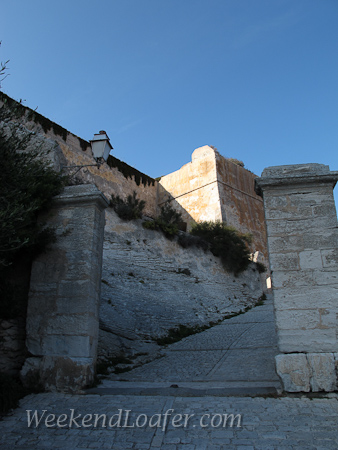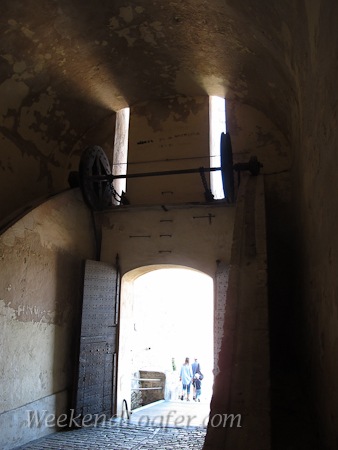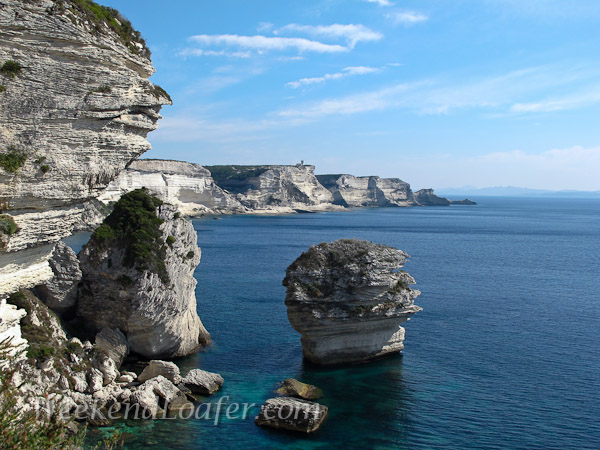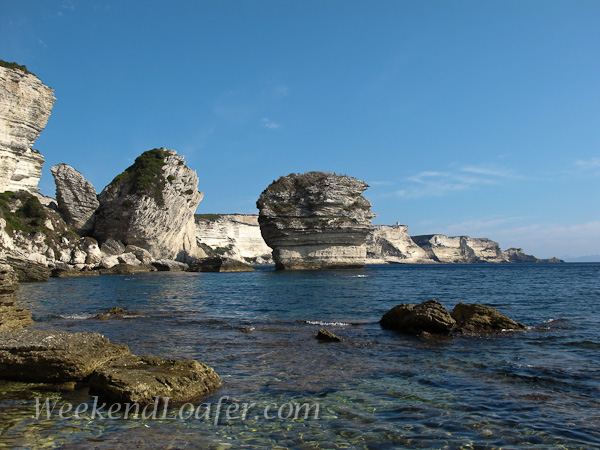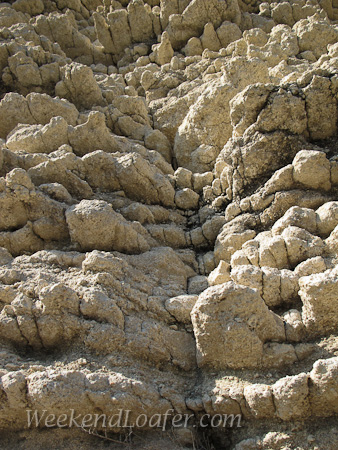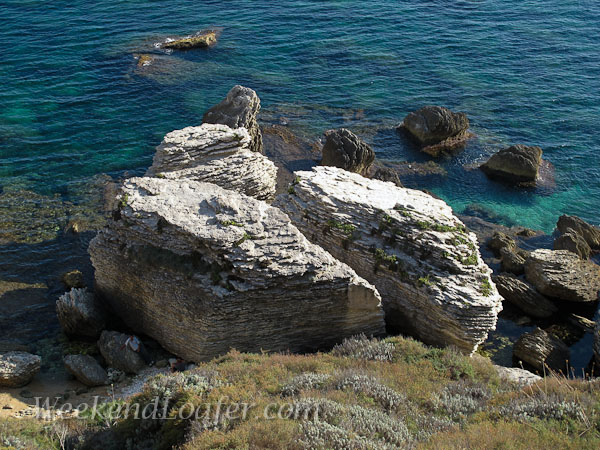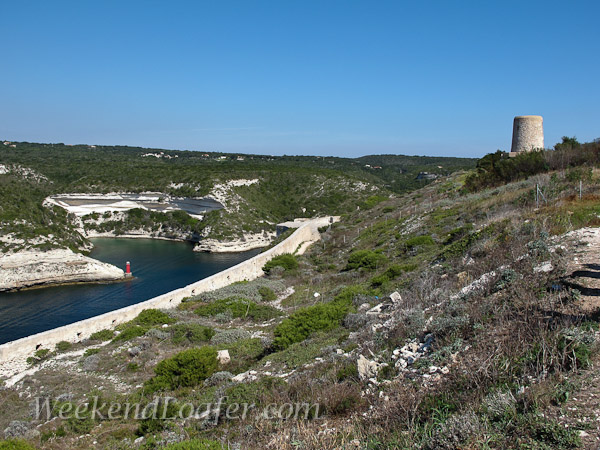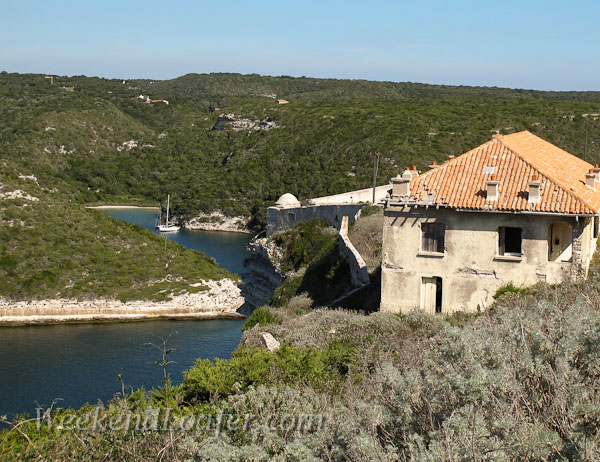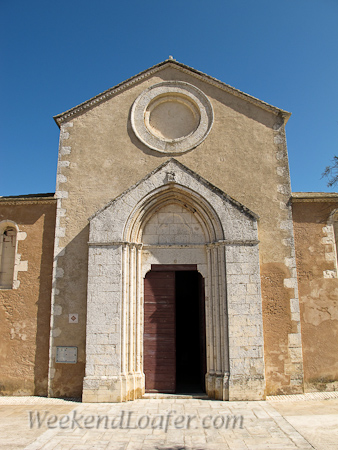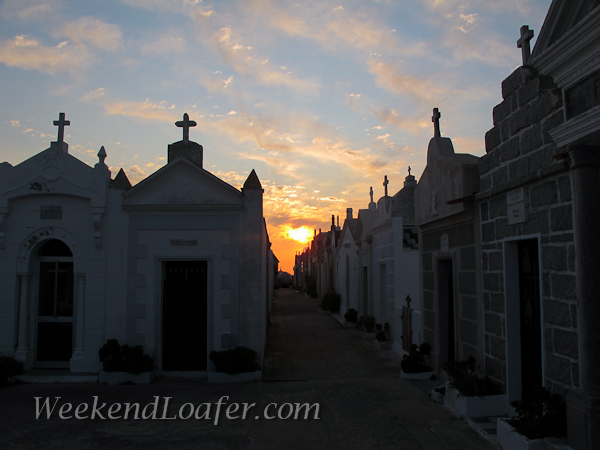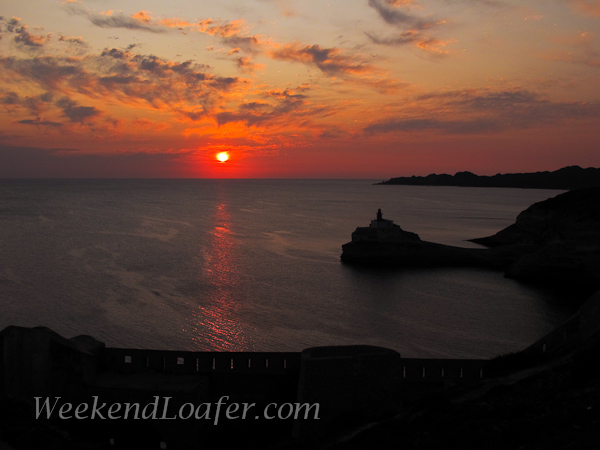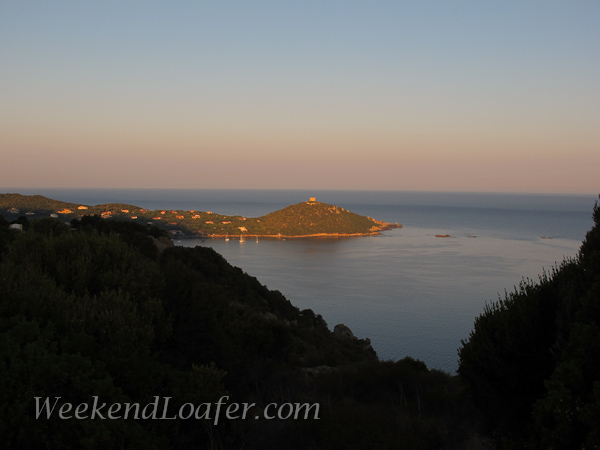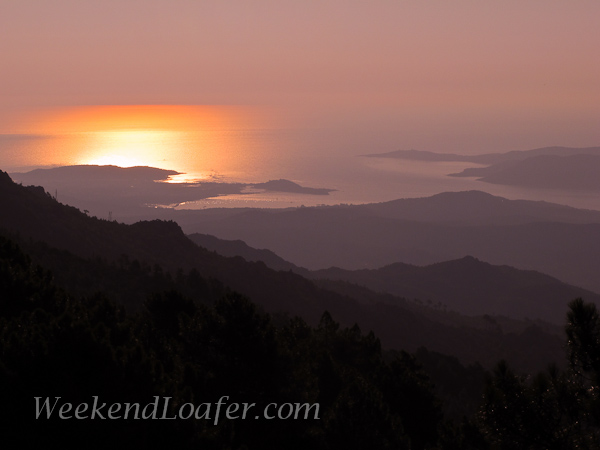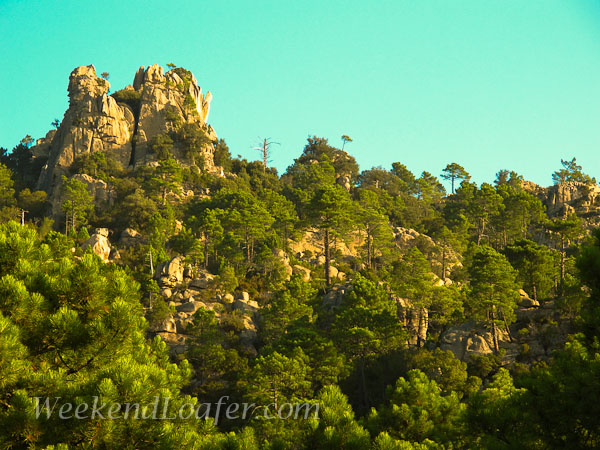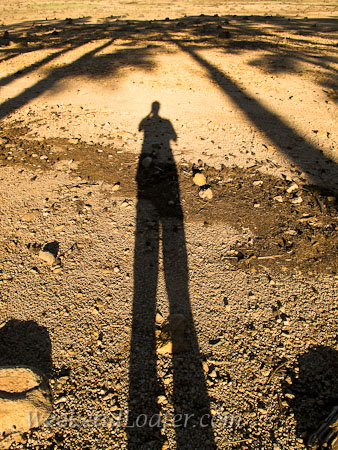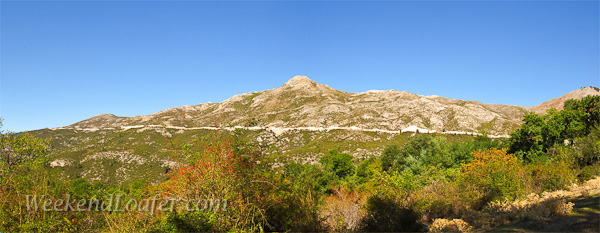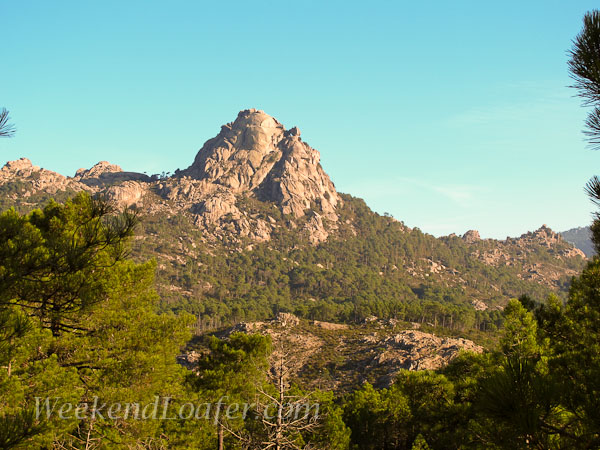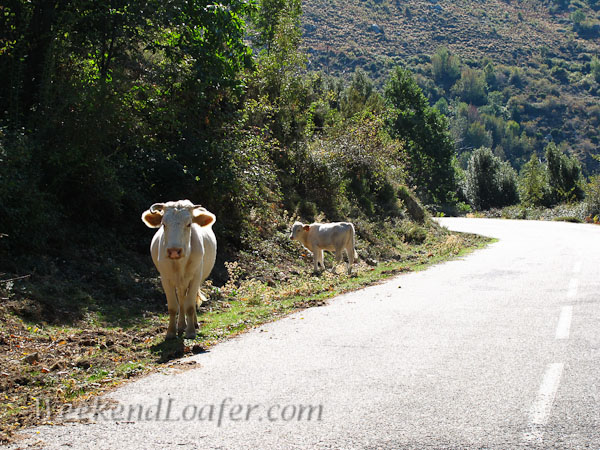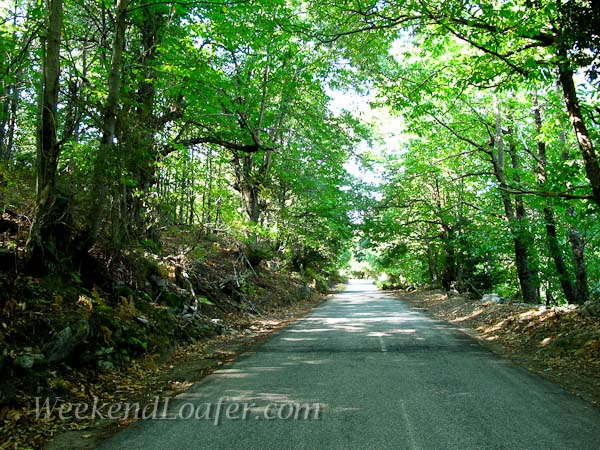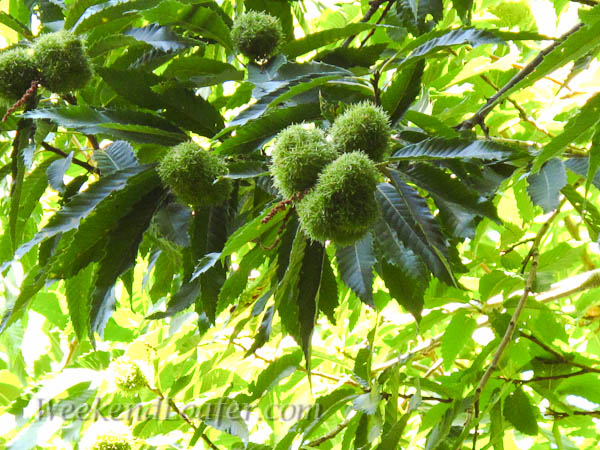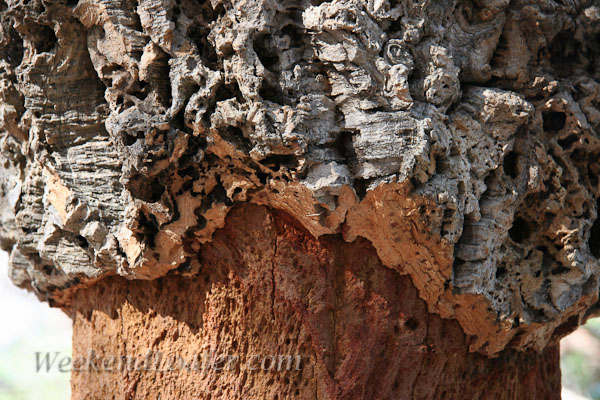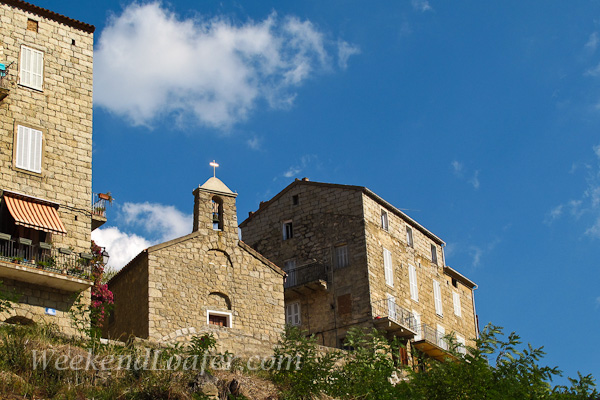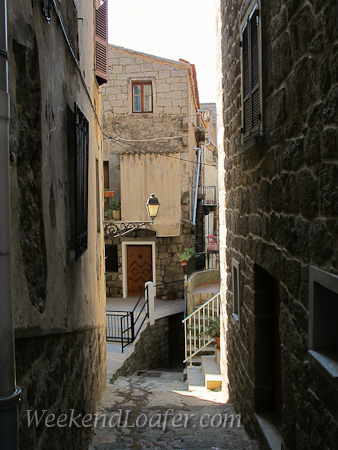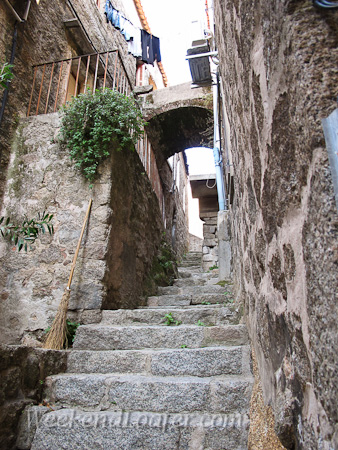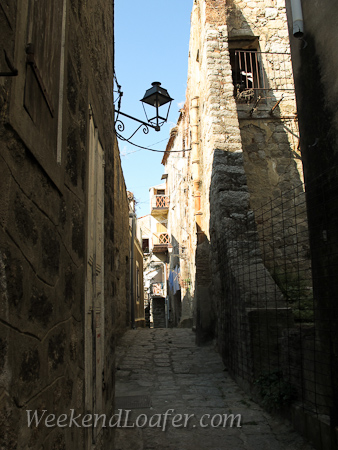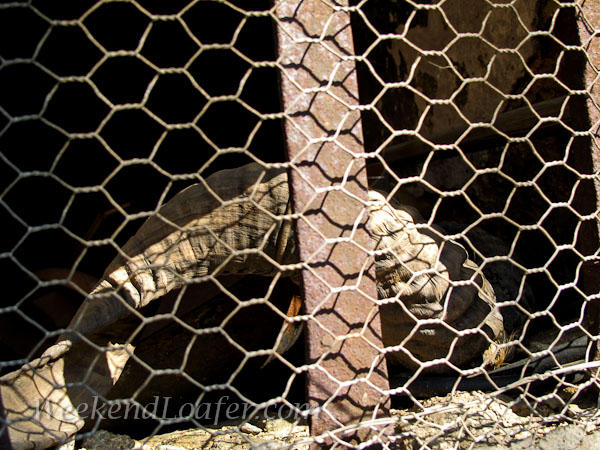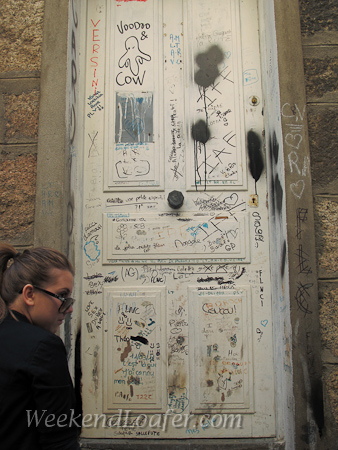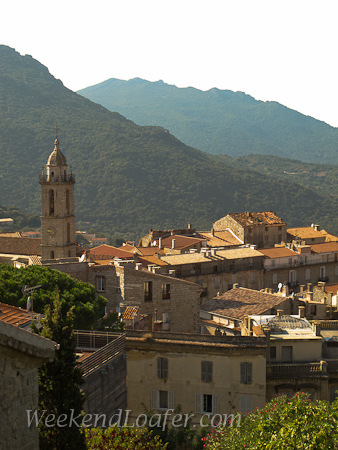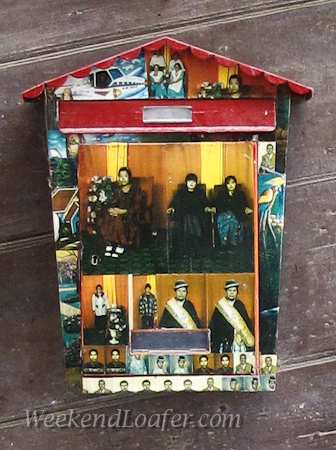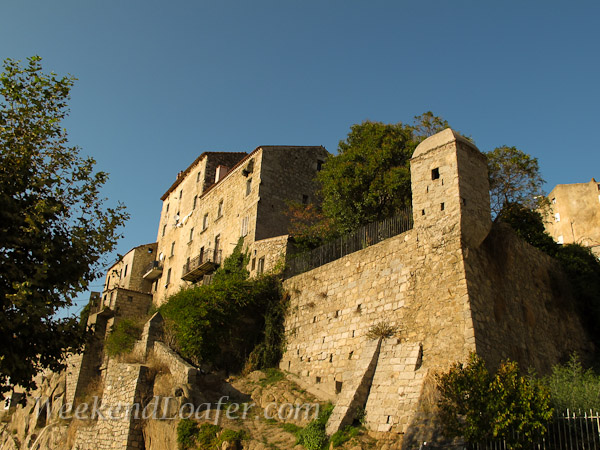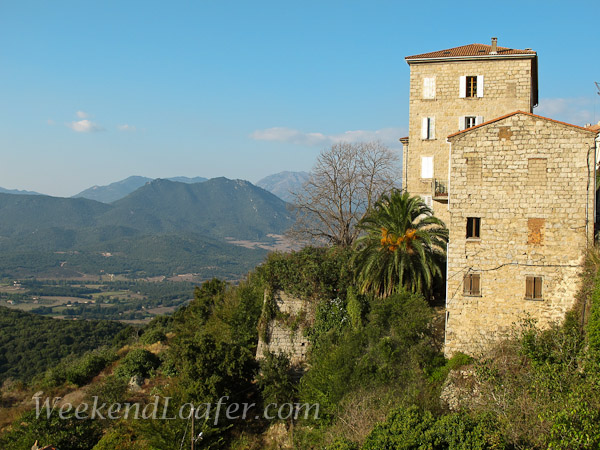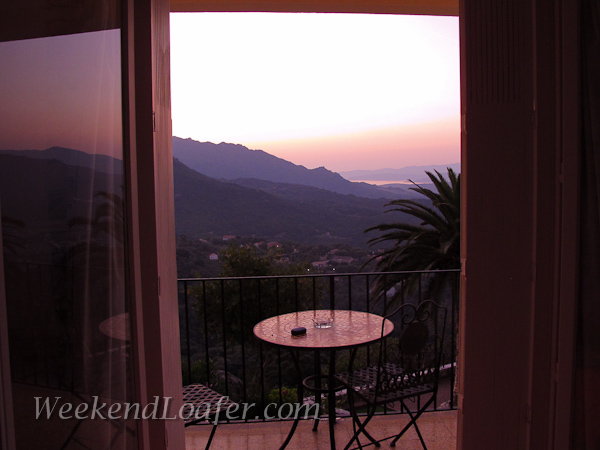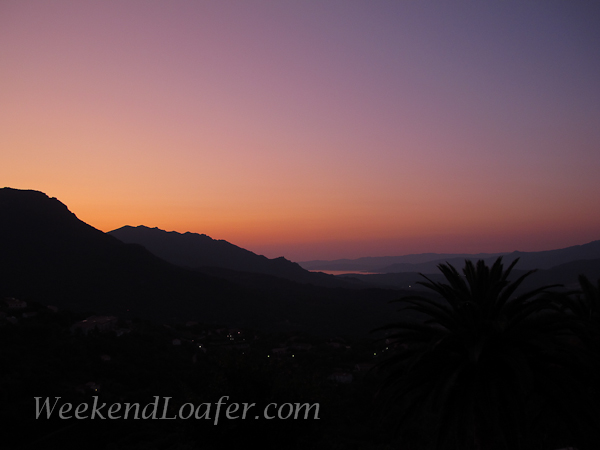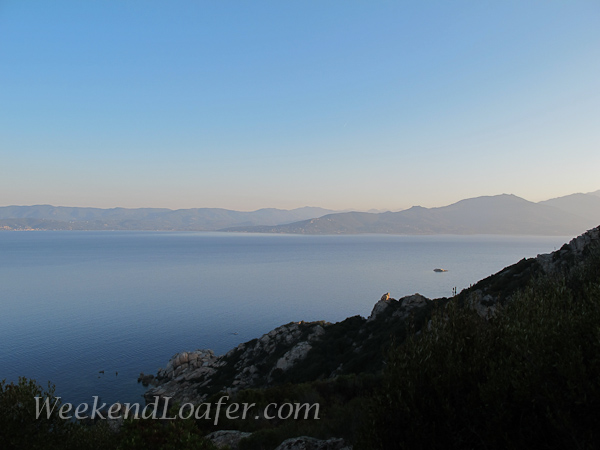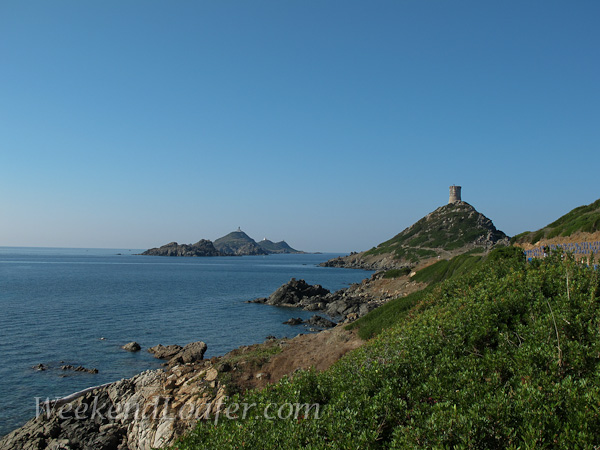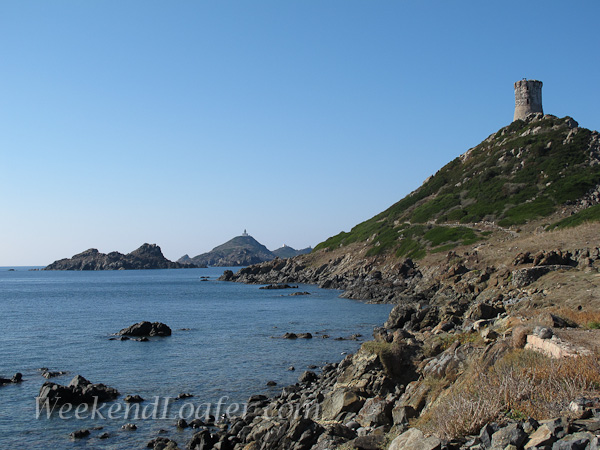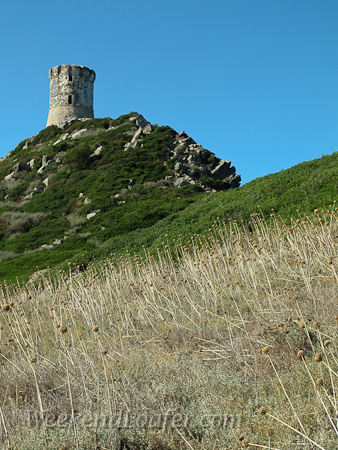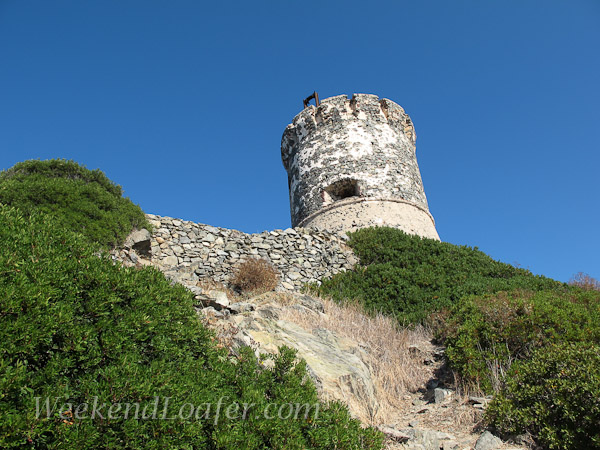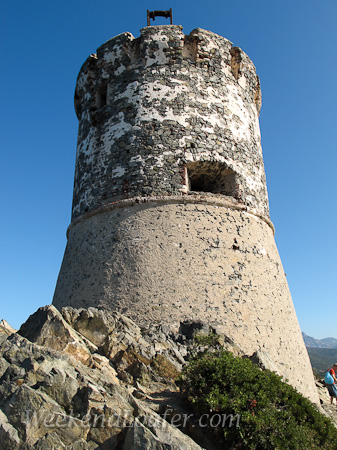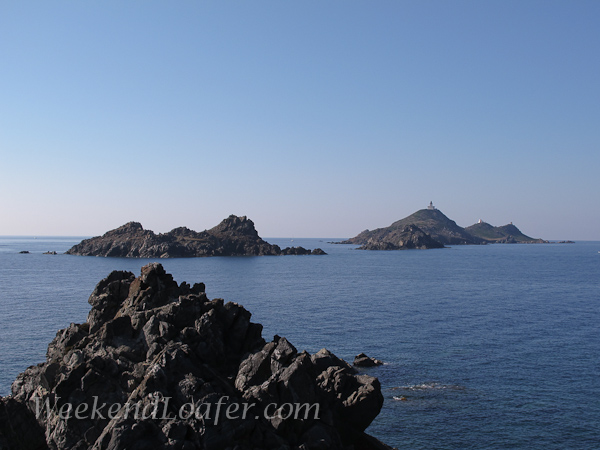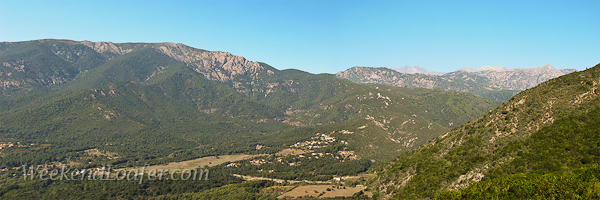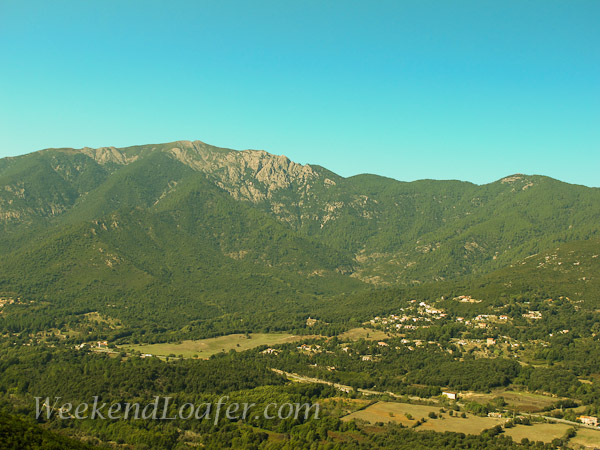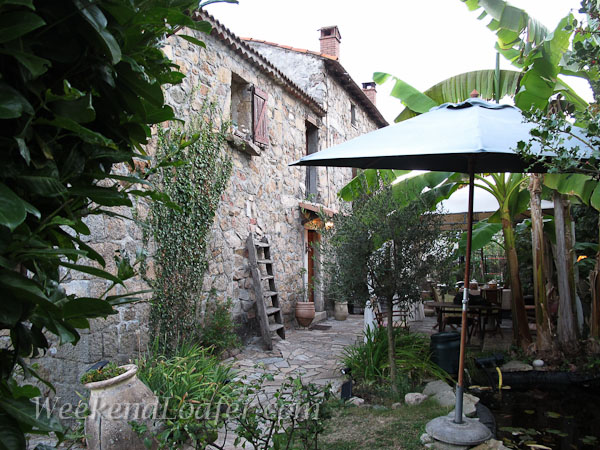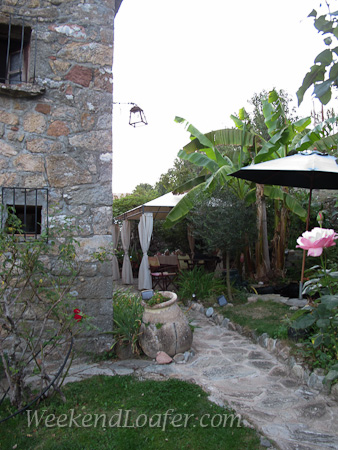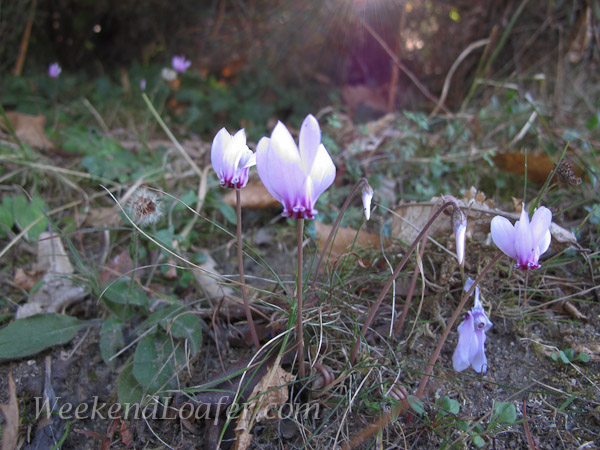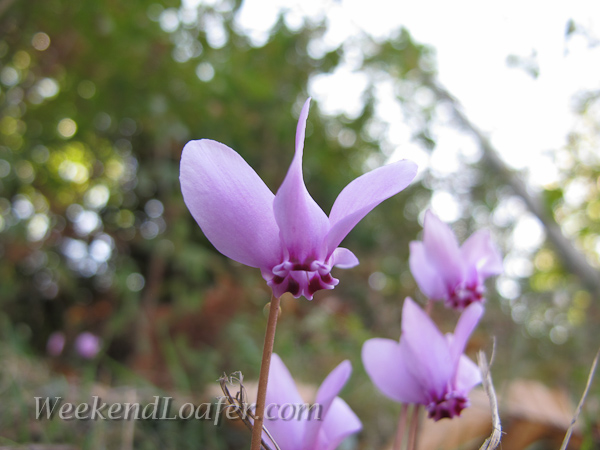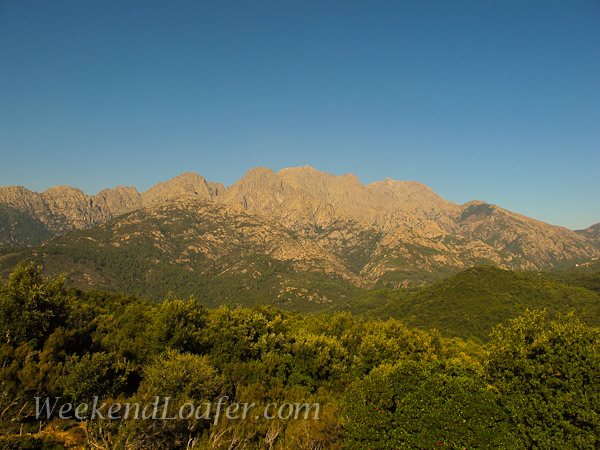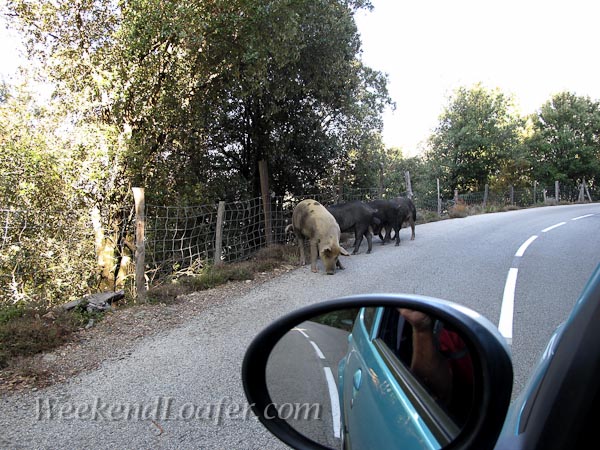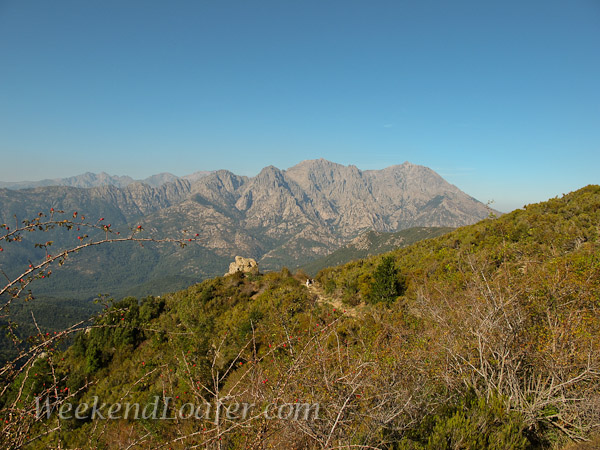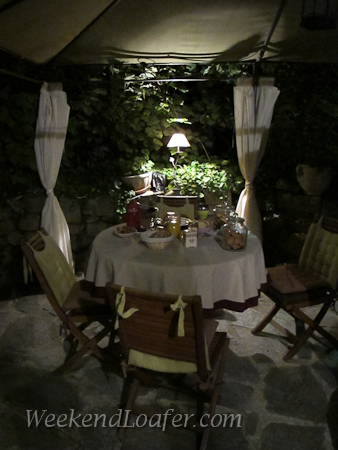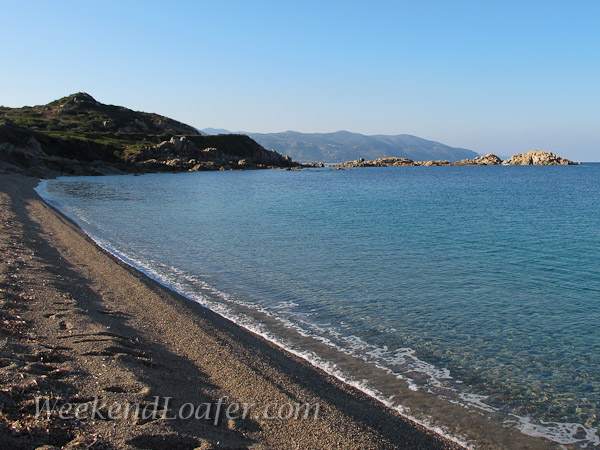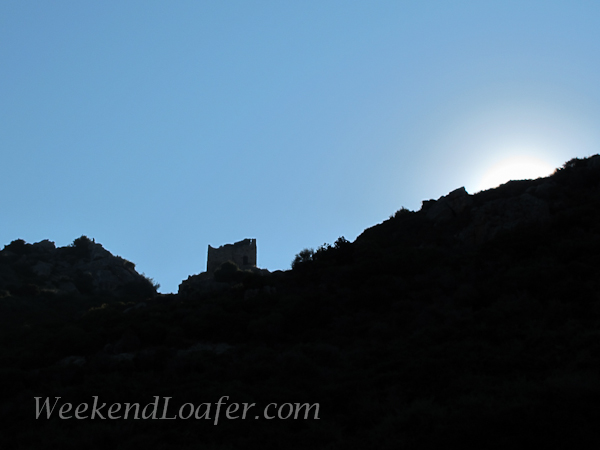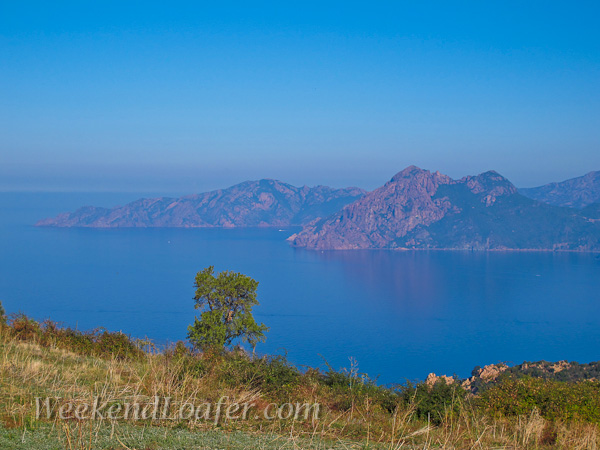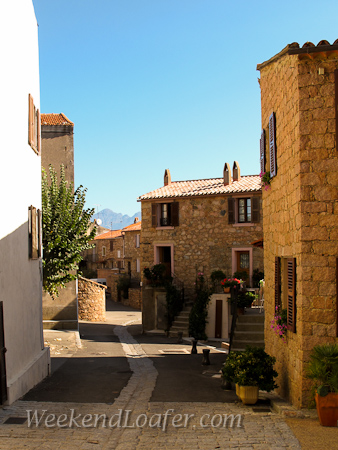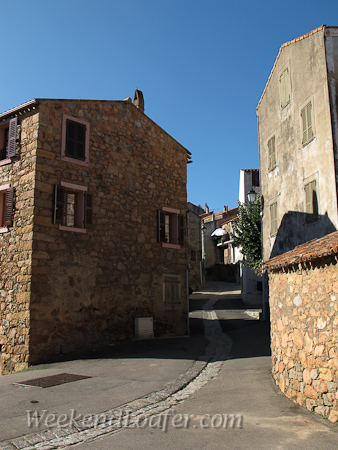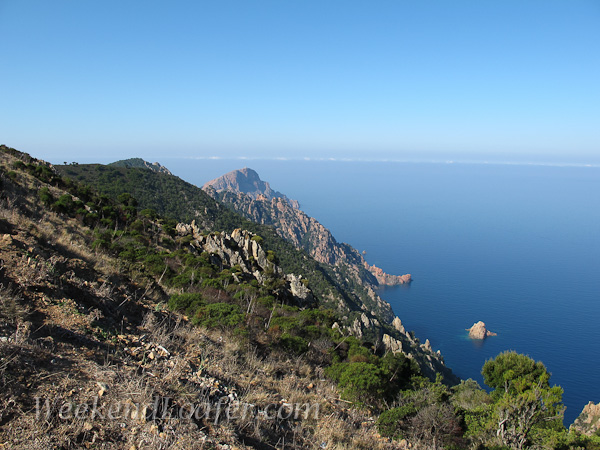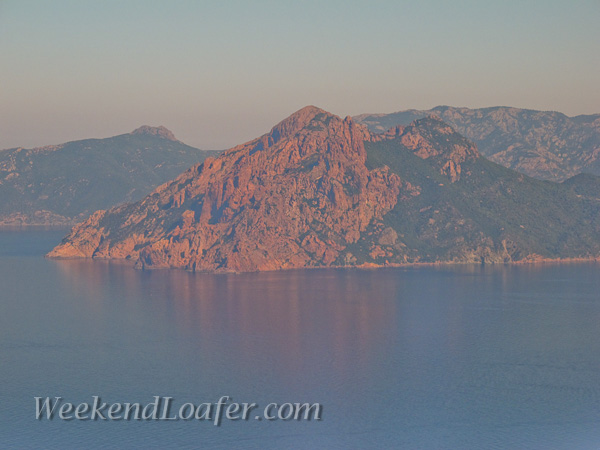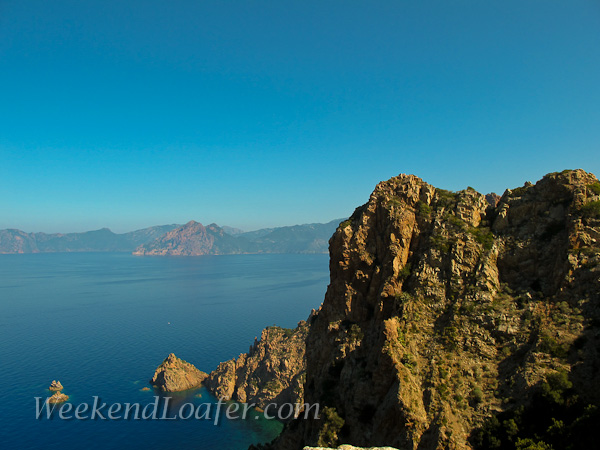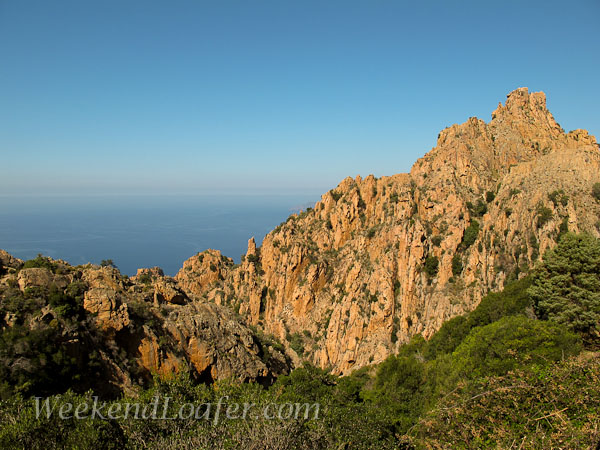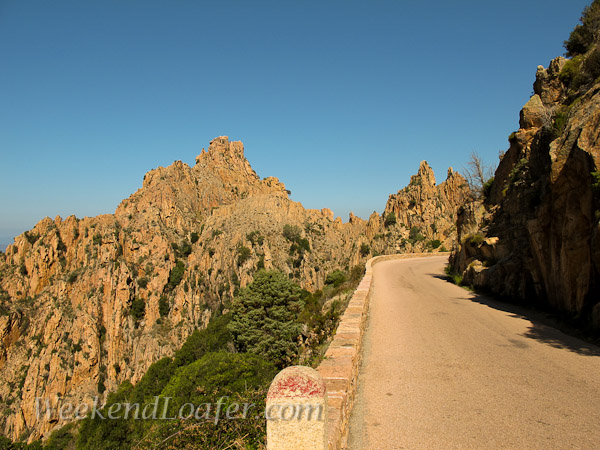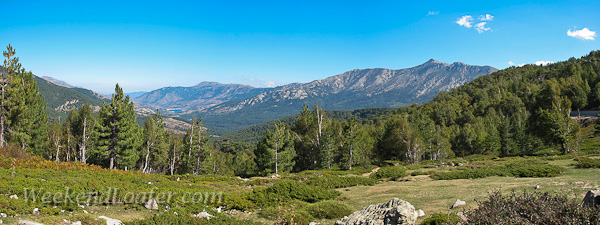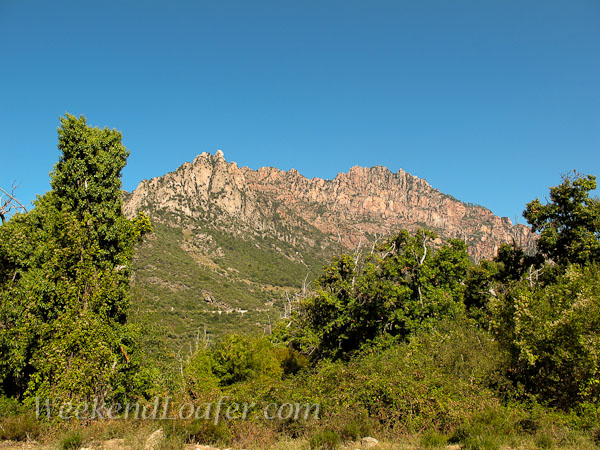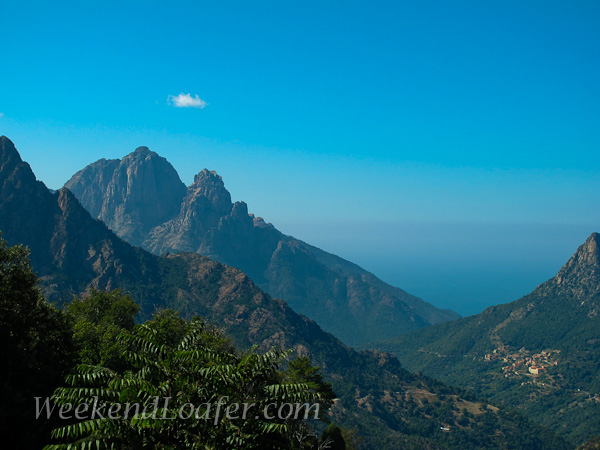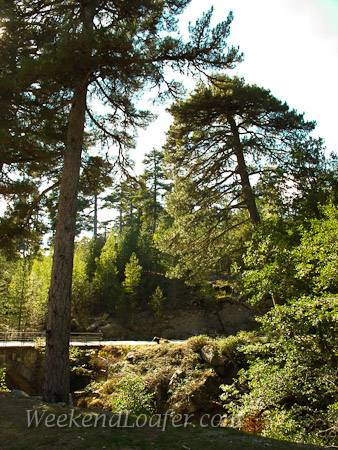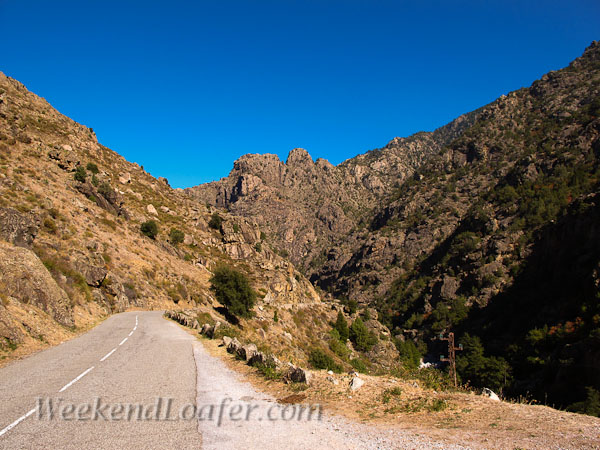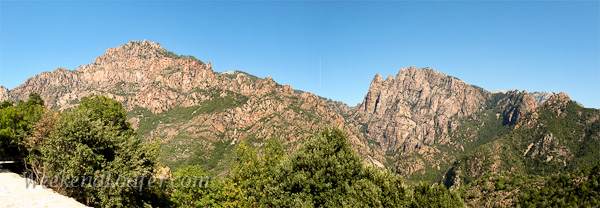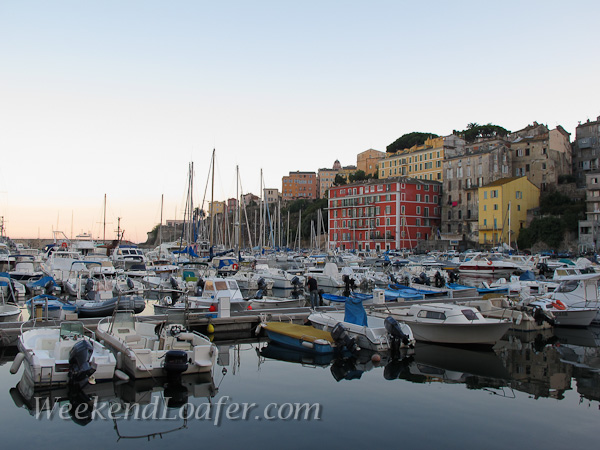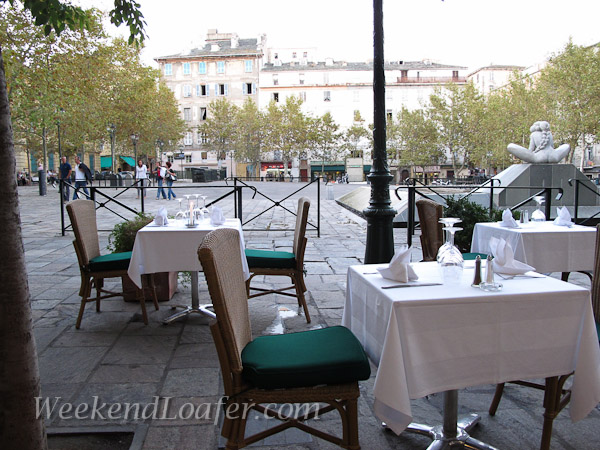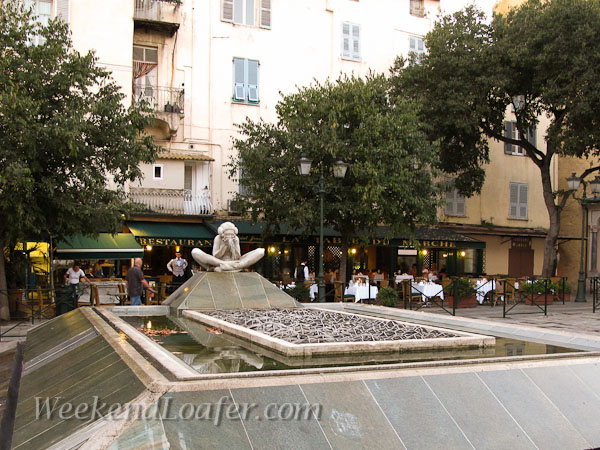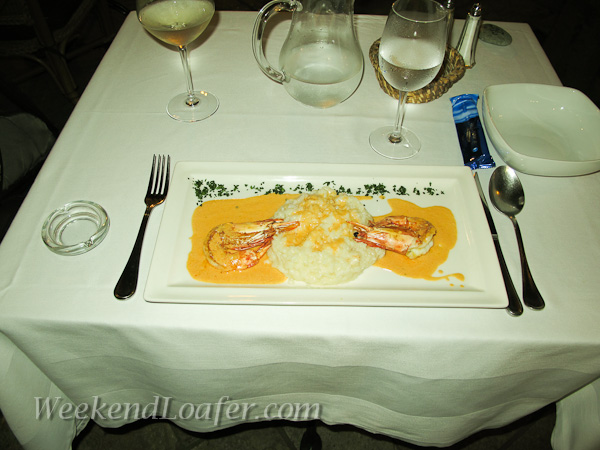
Corsica is truly a land of natural beauty and extreme contrast. Those were my first impressions of this gem of an island — and it still holds true. I’m having trouble trying to put into words, the sheer beauty of this place; even photographs cannot come close to portraying Corsica’s real essence. I first glimpsed Corsica standing on the decks of the Nice-Corsica ferry when it arrived in the late afternoon. The sky was orange as the sun was setting, and in the distance were little bumps on the horizon seemingly back lit by the luminous sky. They seemed to be clouds … but as we got closer there was no question that these were rippling, jagged mountains rising out of the calm of a magical, shimmering sapphire sea. As the ferry rounded the light house at Cap Corse I could see the lights of Bastia slowly getting brighter and brighter. It was hard to pull myself of the rail on deck but I had to go collect my bag several decks below. As the ferry pulled into the harbor, the walk-on passengers queued to debark … and I was first in line for an adventure. The hotel I booked for the first and last night was a short walk and across the main place (not plaza: Corsica is French after all). Place St.Nicolas was bustling with restaurants and cafes along the inner harbor that runs toward the Old City. After checking into my petite room (meaning the cheapest they had) … I went across the street to a small restaurant at the harbor’s edge and watched the local fishing boats bobbing in the water while I enjoyed a very relaxing, simple fish dinner and a glass of wine. At that point (it might have been the wine), I was ready to call it a day, though eager for a new day and to start exploring.
Just to give you a little orientation and the lay of the land … the island is split in two (with a north and south Corsica) by the main mountain chain and continental alpine system running south from St. Florent in the north to Corte in the middle of the island and then turning southeast to Solenzara and reaching the east coast of Corsica. Bastia is the capital city of Haute Corse in the north and Ajaccio is the southern capital of Corse du Sud. Within these two large natural areas there are many smaller natural regions. What I found so dramatic was the difference in geology, physical scenery, natural flora and local architecture between these small regions. Within a 10 minute drive, you can be in a totally different ecosystem. From the shimmering beaches of Ajaccio you can rise above the tree line in the nearby mountains within 20 minutes or in a 10 minute drive north, you find yourself in a dry, almost desert-like terrain.
There is also an equally diverse range of activities to pursue in Corsica. This island is truly a hiker’s paradise. A network of trails crisscrosses the whole island, linking valley with valley and leading you into different ecosystems of flora and fauna. You can pick the length of your hike: a short hike to see a waterfall or prehistoric sites; an all-day hike into the ancient pine forests, or a trek on the GR 20 which is 180 km long. With over 1000 km of coastline, with its rivers and streams and hundreds of beaches, this is an ideal place for swimming, snorkeling, sailing, windsurfing, fishing (to my amazement great fly fishing) canoeing or just kicking back and enjoying a cool refreshing beverage (my favorite is the local pastis, Casanis) with your feet in the sand.
This is the playground of the French, Italians and many other nationalities … a destination attracting over 2 million visitors each year… so plan your visit accordingly. When I was in Bonifacio, sitting at my hotel’s street side café, I asked the waitress how she deals with all the tourists. She said “this is nothing, you should see it in July – August.” I guess living up in the mountains with a population of 15, and a few hundred goats and sheep; I wasn’t quite ready for all the souvenir shops and people. But once I left the popular tourist routes, and got my feet on the trails I felt right at home.
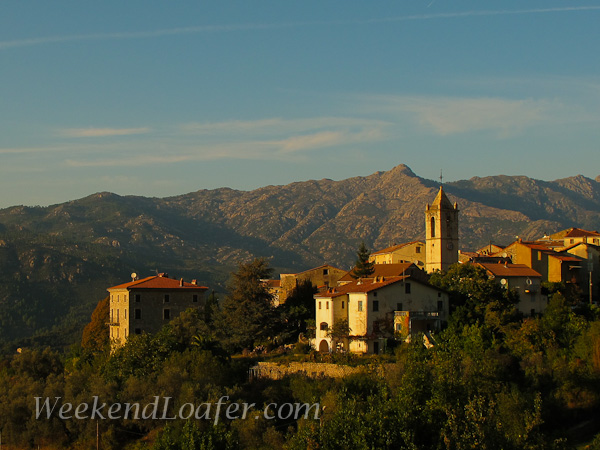
Day one…drive down the coast to Porto Vecchio, Bonifaco
I am an early riser, so at the crack of dawn, I checked out of the hotel and went on a mission to find a cafe for a cup of coffee to start my day. At that time of the morning I was lucky to find one open right up the block from the hotel and very close to the pickup spot for my rental car. I had plenty of time to kill so I just sat and enjoyed a still warm brioche and coffee, listened to the chatter and antics of locals starting their day and thinking about my drive to come. Although Bastia is one of the major arrival points for tourist, the city itself is not geared towards tourism, which I found very refreshing.
After my second cup of strong French coffee, it was time to pick up the car and wander down the east coast of the island and explore the unknown on my way to my first stop: Potto Vecchio. When planning the trip I used the Internet as a resource to get an idea of “must see” places and plot my general route. The only real appointment I had made was on day three, a reservation at a cute looking gite (French version of a B&B) on the other side of the island in the mountains.
After many months of not driving I am glad I picked the flat coastline to get accustomed to driving a stick again, although there was a lot of traffic and many roundabouts! From the road, I did not find the east coast very appealing. There might have been beautiful beaches behind the gated entrances to the hotels and down the small roads leading up to the mountains or beaches … but before I knew it I was approaching Potto Vecchio. My navigator gave me great directions right to the center of the city….lined with boutiques, restaurants and souvenir shops…and a lot of people… uggg. That was not what I really wanted to see. A little disheartened, I continued to drive on to the harbor for a quick walk to stretch my legs and decided this was not the place I wanted to spend the day, so I continued driving on to Bonifacio at the very southern tip of the island.
When I approached the medieval town perched high up on the limestone cliffs, I started to smile … this looked more like what I was hoping for. After a long drive I was ready to find a room for the night (with the help of the information center) and get my feet on the ground. After I checked in and dropped my bag in my petite chambre I had lunch at the hotel’s street-side café and did some people watching. Once again fortified, I walked the labyrinth of narrow lined cobble streets initially defined by the earliest inhabitants and later established by the Genoese … many historic buildings and roads in Corscica are a testament to the influence of Genoa. Exiting the narrow streets I walked one of the NUMEROUS trails atop the limestone cliffs. It was not a very strenuous hike….but the heat of the day and the lure of the water led me down a path of many steps to a rocky beach below. I was not prepared for a swim…. nevertheless I striped off my clothes and slid across the slippery rocks into the cool refreshing sea. Renewed, I walked up the north side of town which perches some 70 meters above Bonifacio’s natural harbor. It is said this harbor bears a resemblance to the home of the Laestrygonians described by Homer back in the Odyssey. This was a great place to sit, to watch the sun set and to put a close to my first day.
Day two …from Bonifacio to Campomoro , Zonza , Zicova, Aullene, Sarene,
Before the sun came up I was up and ready for the next leg of my journey. Even though it looked like a straight run (if there is such a thing on the island roads) I consulted with my navigator and set a course for Campomoro, a little seaside village near the town of Propriano. The sun, just starting to rise over the mountains, made it a very scenic drive. I arrived in Campomoro just as a small cafe overlooking the bay was opening its doors … ahhh … a place to find my much needed morning coffee. I think the proprietor apologized that the pastries had not arrived yet, but I couldn’t be sure — my French is really bad — so I nodded and smiled and enjoyed the coffee. I proceeded on foot towards my first destination, one of the many Genovese watchtowers erected on the island. It was an easy 20 minute walk to the tower. When I arrived at the tower, I reached into my backpack for my camera and discovered I had left it behind in the car … I must have still been a little sleepy despite that coffee … oh well. What I thought extraordinary was that the tower was open to the public (when it is open; it wasn’t at this hour). You can climb up, explore the interior and have a great panoramic view of the Golfe de Valinco. I imagine it would be a great place to watch the sunset. For a structure built in 1586 it looked to be in really good shape! As I walked back to the car, I passed an official-looking gentleman on the trail who looked like he might have been going to open the tower … so I guess this time the early bird didn’t get the worm.
Back in the car I consulted my navigator and set a course for the mountain town of Zonza. Off we shot … at this point I would like to thank my very astute navigator, Laurie. Laurie never got frazzled on the small roads or roundabouts, never told me I was driving too slowly and always talked in a calm distinct voice. I am sure all GPS devices are pretty much the same…but I will never leave home without my Tom Tom. It truly made my trip…really!
Driving the back roads of Corsica are not for the faint-hearted… the main roads are basically OK … but they require you pay attention every inch of the way, as they twist and turn, traversing the mountain grades. It makes site-seeing from the driver’s seat next to impossible. Once you are off the well beaten path, however, it is a totally different story! The pitted, twisty and narrow roads (without guardrails or curbs) taper down to almost a single lane and you have to be really on your toes for livestock in the road! Honestly! Pigs and cattle roam the mountains wherever they want! I had several nervous-making confrontations with wandering farm yard animals. More than once when coming around a blind curve I had to avoid a huge steer walking in the road … and then dodge a pack of domesticated pigs. But this small road was shaded by the ever present chestnut and cork trees as it climbed up the mountain and offered some breathtaking views.
I stopped at a small town before Zonza and met two every ambitious cyclists who had been peddling for 5 days. They told me of a gite (B&B) a few kilometers up the road…and suggested that it would be a good place to stay for the night. So…I continued up the small road and soon came to a sudden impasse…the road was under construction and was not really passable without a four wheel drive…and I certainly did not want to risk it with a rental car. On the way back down the mountain with my sites now set on Sartene, a medieval mountain town, I ran into the cyclists again and told them of the road conditions …. it did not seem to concern them at all and they said “we will just push the bikes up.” As I do not like to back track, I found an alternate route that took me through small villages, a medley of chestnut forests, vineyards and farms dotting the landscape as I made my way down into the valley below.
I arrived in Sartene in time to still have lunch at a café on the main place. I looked the menu over and noticed the plat de jour was a Shepherd’s salad. I knew I could not go wrong ordering goat cheese in the mountain and it was very fresh. A couple sitting at the next table noticed that I was speaking English when ordering my meal … and asked where I was from…which started a nice conversation about Nice where they live now and Sartene where he grew up. It was good fortune that I ran into them as they steered me toward a nearby hotel. The husband gave me his card and said the owner of the hotel was an old friend and it was right below the old city. After lunch and coffee I made my way to the hotel to enquire about a room. When I asked the attendant about a room in broken French-English…she smiled and walked away…and soon another woman appeared. I handed the gentleman’s card to her and she smiled. I asked if they had a petite room and she said in broken English no…but as the room rates went down today, je vais vous donner une chambre avec un balcon et une vue …. and the room did have a great view.
I walked back into town and meandered through small twisting cobblestone alleys of the well preserved old medieval city. It was very charming and was not over run with tourists! (I was lucky) I ventured off the main alley to see if I could find a good view of the walls enclosing the city and happened upon two young girls who were tagging(well, writing their names) on what looked to be a very popular door. I am not sure why…but they handed me the pen and paused…so I left my name on the door…Jude…they both looked at me and repeated my name…it was a very unexpected and oddly wonderful exchange. Later in the day while having a coffee at the main place (plaza)…the two girls passed the café where I sat and waved and said “Salut! JUDE”…. As the sun became lower in the sky, and being exhausted from a day of discovery, I strolled back to the hotel and watched as twilight enveloped the valley.
Day Three…up the coast to Ajaccio, Pinte de la Parata, Carbuccia, Bocca di Scale and a view from1600 meters
After a great night’s sleep I was ready to start the journey up the coast to my destination Ajaccio, the capital of the island. The major road skirts the coastline for a short distance and then heads inland where it twist and turns as it traverses the mountain grades. It was a very scenic drive, but they are very few pull offs along the road, and when one does occur, there doesn’t seem enough time to pull over. As I got closer to Ajaccio… the two-lane road became four lanes with many turnabouts’ and a lot of traffic. I headed through the downtown area and then towards the port and the location of several of the attractions. One of those attractions and Ajaccio’s claims to fame is that Napoleon Bonaparte was born and raised there. Statues and banners are everywhere you look, showing Ajaccio’s great pride in being the place of Napoleon birth. The city is also noted for its outdoor food markets, flea markets, museums, narrow old city streets, great restaurants, and the list goes on … but being stuck in traffic for 45 minutes with no place to pull over and park….I found it very frustrating. And to think that this was after the end of the tourist season! So I made my escape along the coast line dotted with hotels and restaurants towards Pinte de la Parata and the Genovese tower which was to be my second stop of the day.
When I arrived, the parking lot was almost empty which I always think is a good sign. I took my backpack, some water and scrambled out onto the well worn trail. It was a relief to be out of the car, and have my feet on the ground once again. The trail worked its way around the peninsula high above the sea to the Genovese tower. From there I had a great vantage point to see the Iles Sanguinaires which are a group of 4 small islands in the Gulfe d’Ajaccio. The islands got their name because of their red (sanguinary) rock formation and the red soil that is present both here and along the coast. As I backtracked on the path to the trailhead, I was lured to the public boat ramp at the sight of two men fishing. I’m a fisherman at heart and could not resist seeing what was being caught. I sat mesmerized on the stone pier watching one old man’s netting technique. It was quite simple; he would lower the weighted net to the bottom of the crystal clear water, throw some ground up bait on the surface to entice the hundreds of small herring in his direction, and then in a fast jerking motion bring it to the surface trapping many of the small fish. As he lifted the small net out of the water, his small dog, a terrier, would bark with excitement, intently following the net as it was being emptied into the almost full bucket. The fish that that fell to the ground were his reward!
Time slipped away as I watched the old man and his dog … I suddenly realized I had to arrive in Carbuccia and check in at the gite by 3:00 … so off I went. As I navigated my way back to the main road out of Ajaccio, I found and followed the small, cork tree-lined road that led me to the mountain town of Carbuccia. When I arrived at A Casa Funtana I was greeted warmly by my hosts, Frederic and Cathy. I was very lucky that Fred spoke perfect English and that both were very gracious hosts. The restored granite house was once part of a forging mill dating back to 1623. We sat on the patio in the beautifully landscape garden and introduced ourselves over a cup of coffee. Fred was very helpful in planning out my excursion for the afternoon, which took me to a great col (mountain pass) at 1600 meters, other nearby sites and small surrounding villages. I could have stayed several days at Casa Funtana to see the region at slow pace and obtain an intimate feel for this region. Fred told me that there is excellent fly fishing in the spring, and I am sure the wild flowers would be extraordinary … I surely will return to their beautiful maison again.
Day four … from Carbuccia to Cargese, Pina, Porto, Forêt d’Aïtone( pine forests) and the road back to Bastia
I awoke to the sound of the village clock chiming six times … and being faintly echoed from the bell tower of the small neighboring village … as they announced the new day. I stayed in bed for a while, looking at a map and reviewing my course for the last day on the road. Fred informed me the day before that he leaves for work at 7:00 and I could have coffee then and follow him down the hill. As I was eager to start my day, I went down for coffee in the garden, still cloaked in darkness, and was surprised to see the table already set with petit pots filled with local confitures and little jars of honey as well as paniers of breakfast cookes and pain. I am usually not a big breakfast person…but I made the exception….I just had to taste the local confitures and honey! Though it was time for Fred to leave, I didn’t want to depart yet … I wanted just to sit and savor this spot for a bit longer at A Casa Funtana.
After several cups of coffee and bread dripping with honey I knew it was time to leave, to journey down the small road again back towards Ajaccio, and then follow the coast towards Porto. After getting accustomed to driving these roads for a few days the road down didn’t seem that scary… but you still have to be really vigilant at all times….one never knows, like that morning when a BIG truck appeared from a blind curve! That really got my attention!
As the sun came up over the mountain I was climbing … not a cloud was in the sky … it looked like it was going to be another beautiful day. There were not too many cars on the road as I made my way to the col (mountain pass)… so I was able to enjoy the scenery as I made my decent towards the coast. It was a short drive before I stopped at the small town of Cargese with time to take a breather along the picturesque beach. I walked for a long while, collecting worn pieces of granite and drift wood, and watched a family of cormorants fishing the shore line. Reluctant to leave the beach, I had a lot of road to cover to make it to Bastia by 5:00 to return the car. Once again the road turned away from the idyllic coast and inland to my next destinations Piana and Porto.
My first stop in Piana was a local café to get a croissant and a cup coffee next to the 18th century church and square. I walked through small alleys lined with pink granite houses in the quaint, sleepy village looking for a view of the calanches in the Golfe de Porto….and found it. I was pleasantly surprised that this quaint little village was not overrun by tourists. The ride to Porto had to be the highlight of the trip…at every turn…I laughed out loud seeing the red granite cliffs rising to the sky and dropping dramatically into the sea below…it was breathtaking. I only wish I could have taken a video of the drive…but that was impossible. Even the photos I did take cannot really capture the splendor of these natural formations. I didn’t have the time I would like to have had in order to explore Porto, the UNESCO-protected site of the Calanches in the Reserve de Scandola, or many of the other coastal villages to the south…that will have to wait for the next trip.
The last leg of the trip across the island immersed me in many different ecosystems…from the Forêt d’Aïtone to one of highest peaks at the core of the island…back down into dry mountain scrub land, all of which could take days to explore. The one place that I did stop and take a short walk was in the Forêt d’Aïtone. It was astonishing to see thousands of soaring Laricio pines, some over five hundred years old and 50m tall lining the mountain side. This remarkable forest extends over ten square kilometres between Évisa and the Col de Verghio (1477m), the highest point in Corsica traversable by road. There are several networks of trails and cabins within the reserve that would make it a perfect home base to explore this region at great length. My ride back to Bastia could not have been timed more perfectly….I arrived a half hour before the Euro car agency was to close. To my surprise…I drove almost 900 km during my trip! The rest of the evening I spent roaming Bastia and treated myself to a final farewell dinner. I hope you enjoyed this brief look at this beautiful, enchanting island….









